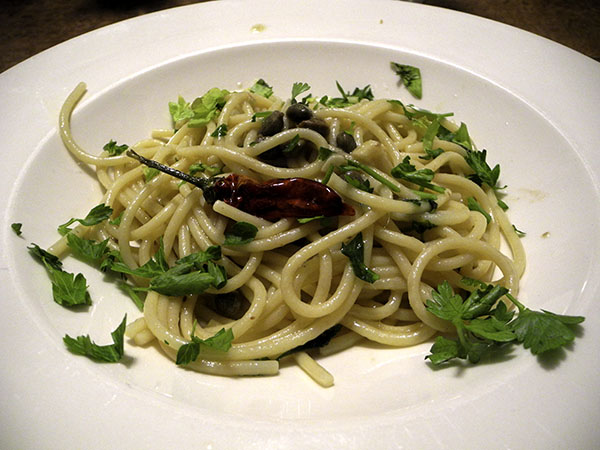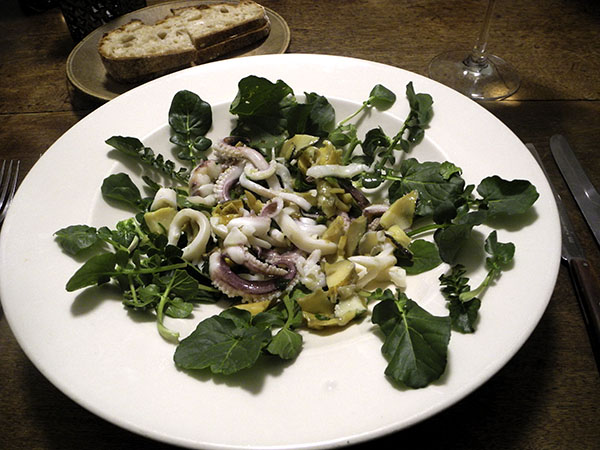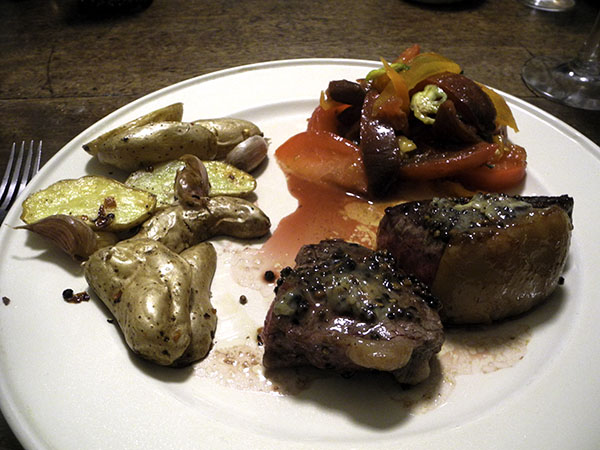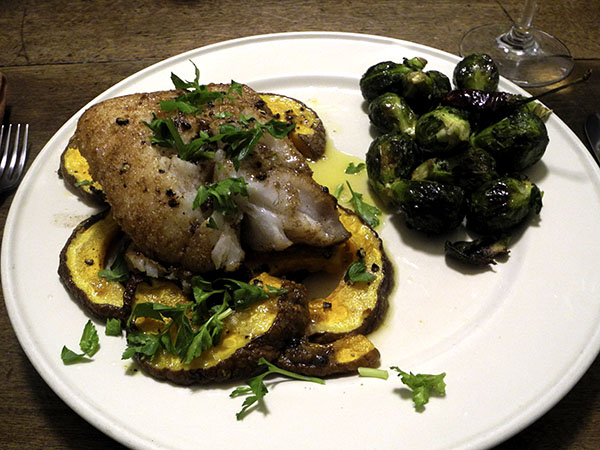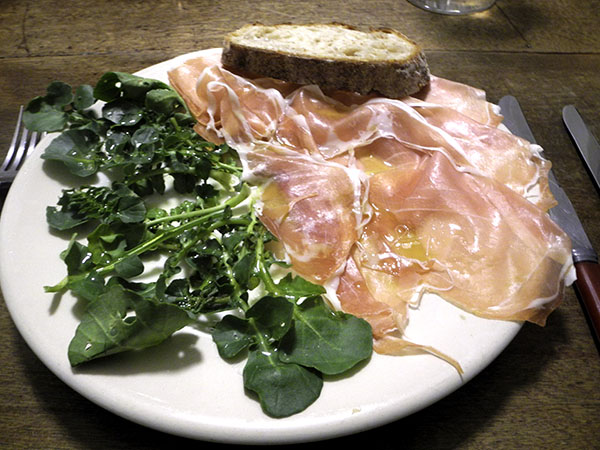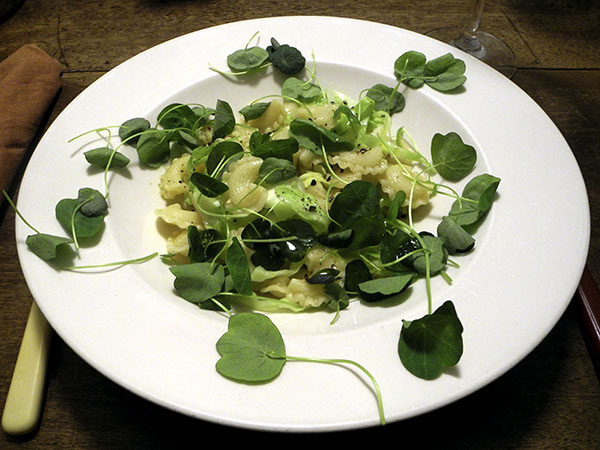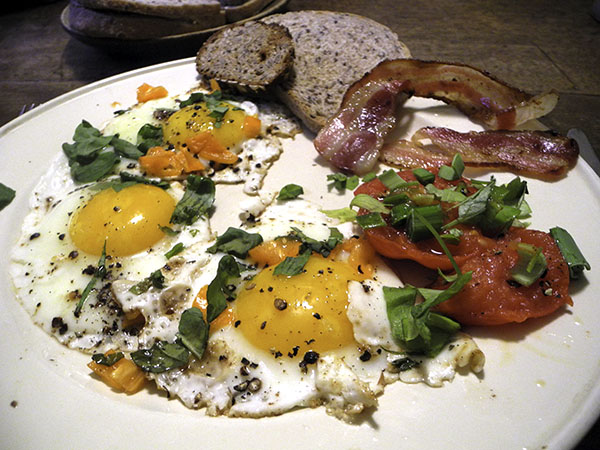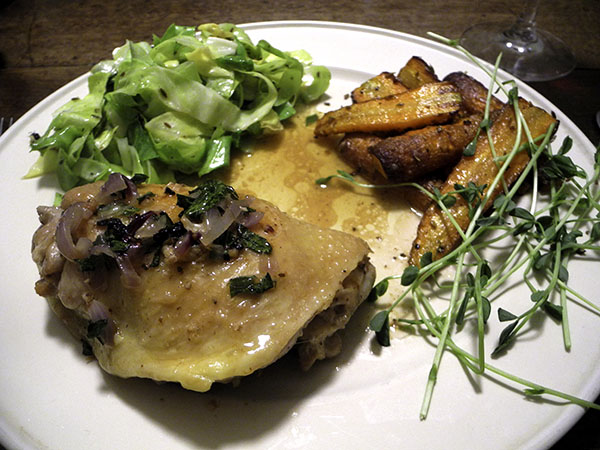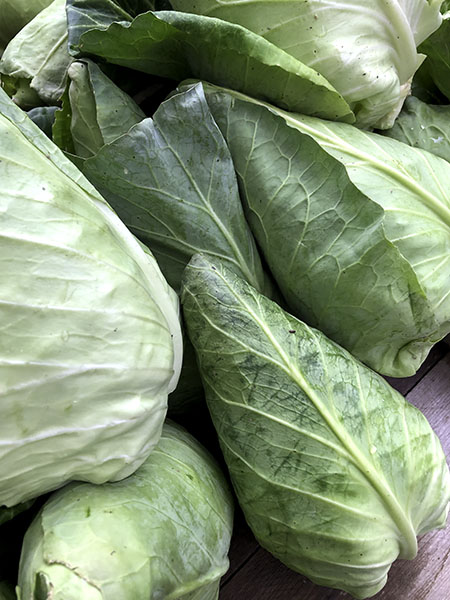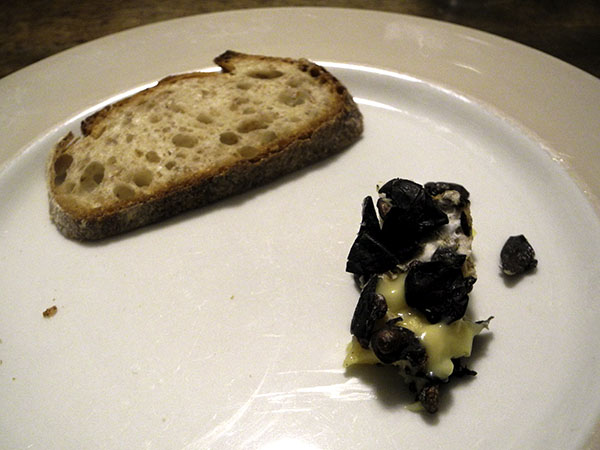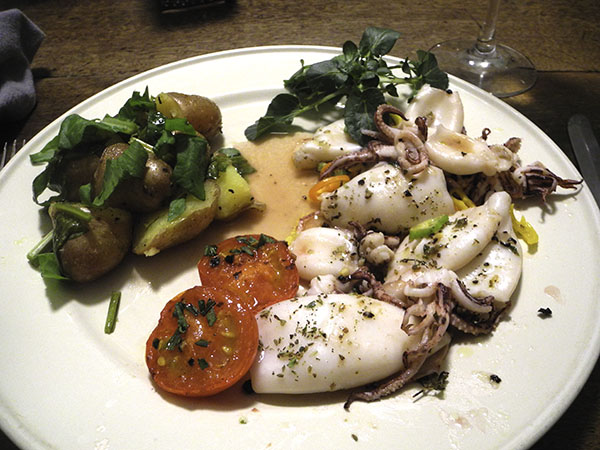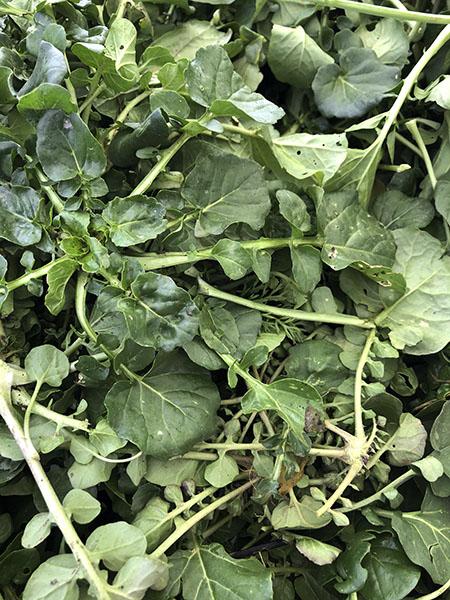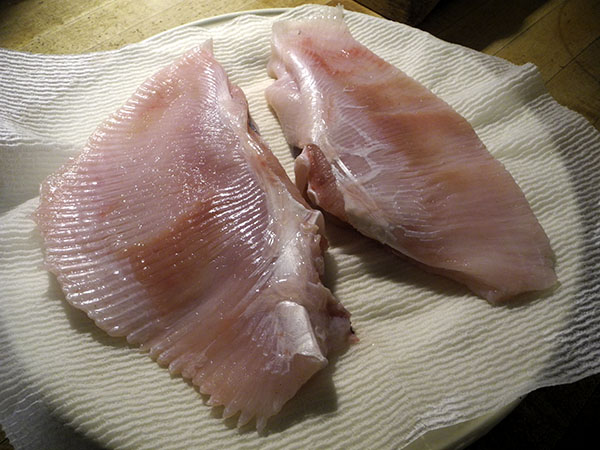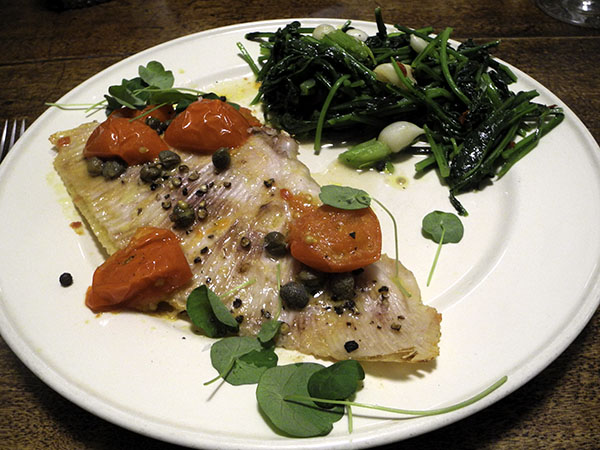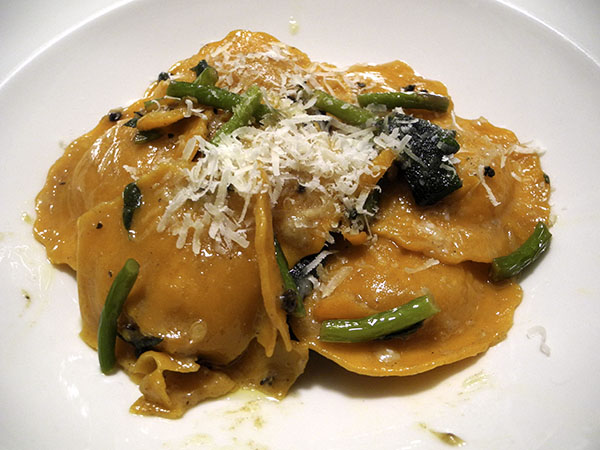
A good December meal.
- two thick 12-ounce blade pork chops from Flying Pigs Farm, rinsed, thoroughly dried, seasoned with sea salt and freshly-ground black pepper before being seared quickly in a heavy oval enameled cast-iron pan, then half of a large organic Whole Foods Market lemon squeezed over the top (after which the lemon was left in the pan between them, cut side down), the chops placed in a 400º oven for about 13 minutes altogether (flipped halfway through, the lemon squeezed over them once again and, after a bit of crushed dried habanada pepper had been sprinkled on top of the pork, placed again on the bottom of the pan), removed from the oven and arranged on 2 plates, the juices that remained, with the addition of some juices remaining from a tomato salad prepared for a meal 2 days earlier, poured over them, the rest transferred to a glass sauce boat and placed on the table
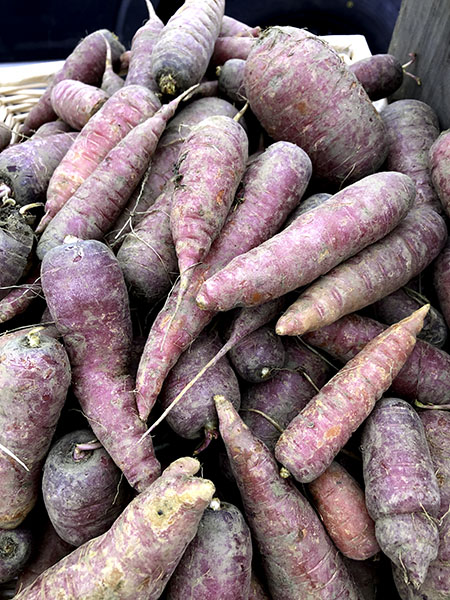
- four small dragon carrots from Tamarack Hollow Farm, scrubbed, dried, rolled inside a small unglazed ceramic Pampered Chef oven pan with a little olive oil, sea salt, freshly-ground black pepper, and less than half a teaspoon of crushed Italian fennel seed, roasted at 400º for about 30 minutes, or until tender, arranged on the plates and garnished with small nasturtium leaves from Two Guys from Woodbridge
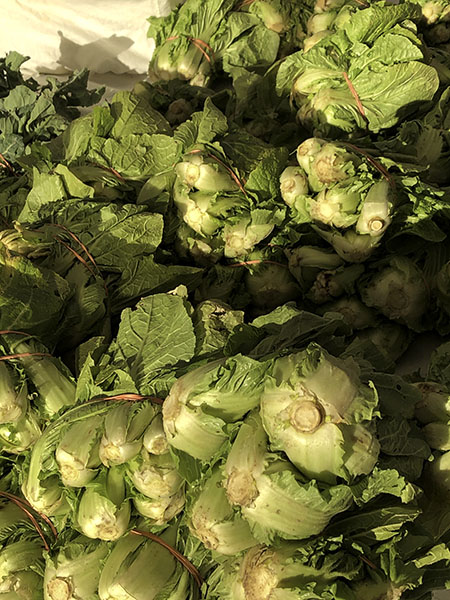
- one bunch of young Napa cabbage from Lani’s Farm, washed thoroughly, trimmed, torn into smaller sections, wilted in olive oil along with 9 or so crushed juniper berries, seasoned with sea salt and freshly-ground black pepper, and drizzled with a little more olive oil
- the wine was a Washington (Columbia Valley) white, Michaud Columbia Valley Chardonnay 2017, from Naked Wines
- the music was ‘Il giardino di rose’, works by Alessandro Scarlatti, another section of the album, ‘Il gioco Barocco del seicento italiano’, seventeenth-century Italian music performed by Ottavio Dantone, harpsichord and conductor, and the Accademia Bizantina
